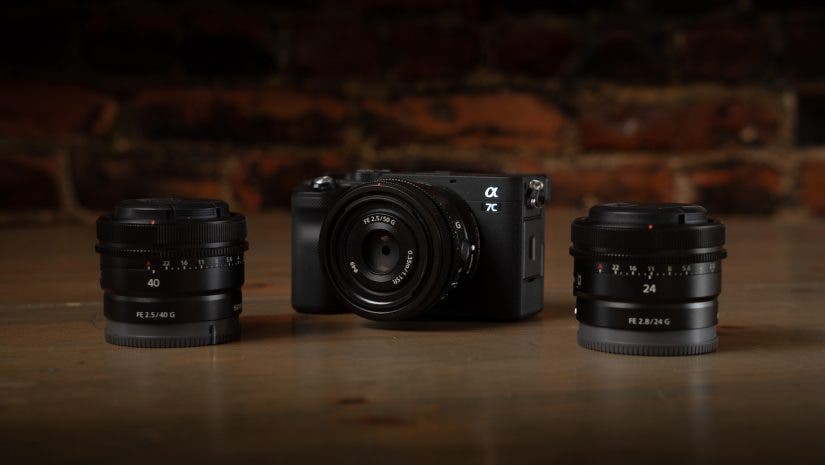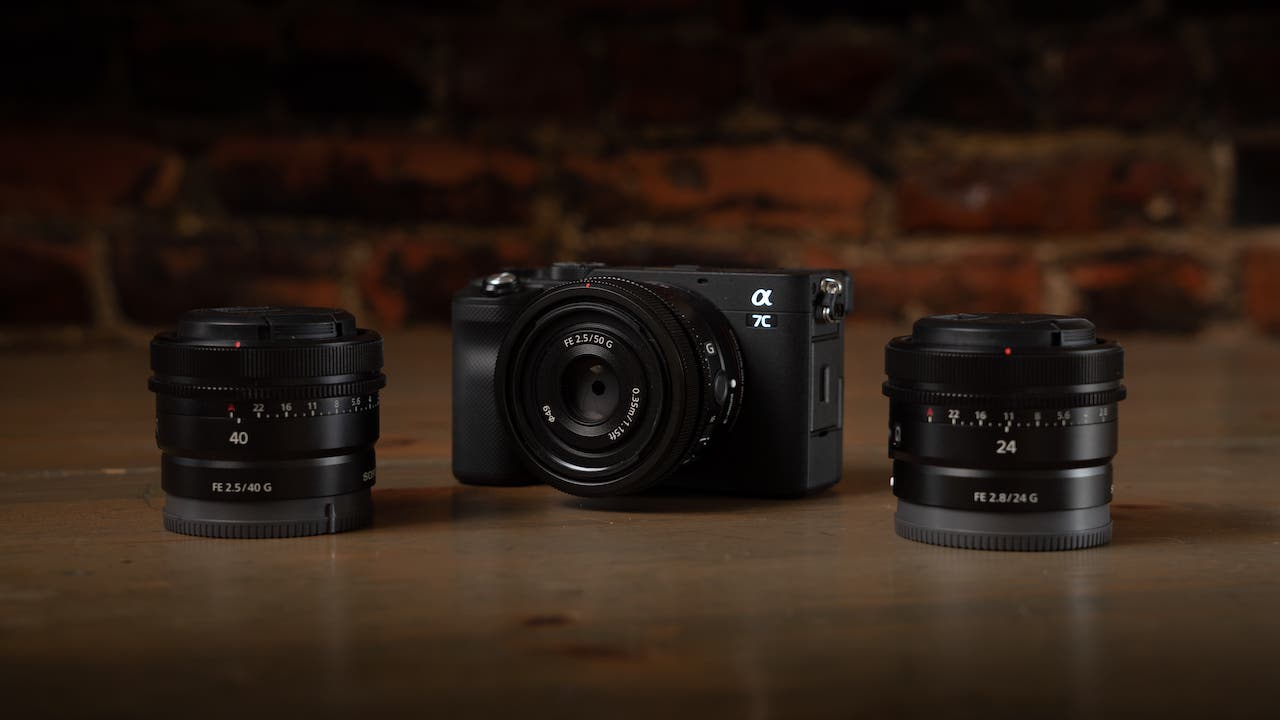Even after visiting almost 40 different countries, travel photography is still my favorite thing in the world. Nothing makes me want to take out my camera more than being in a completely new environment. Up until now, I’ve rarely convinced myself to concentrate on video while traveling. Generally, shooting great video requires significantly more gear than photography so I find myself defaulting back to photography every time. However, when I received this full frame Sony Alpha 7C Digital Camera and set of full frame, 24mm, 40mm, and 50mm compact prime lenses, I decided to head to Portugal to see if this simple setup was up to the challenge of shooting great travel video.
Portugal is a country I have been dying to see for years. With its gorgeous cliff-lined beaches and historic cities, I figured a road trip through Portugal would be the perfect place to put this gear to the test.

Form and Focus
First, let’s talk a little about the Sony a7C. The form factor took some getting used to compared to my A7R III. While it does have a full frame 24mp sensor, the body is much smaller and is more similar to the A6600. Shooting handheld video on a lightweight camera is tough because light cameras are more subject to camera shake. Fortunately, the A7C’s 5-axis in-body sensor stabilization was able to compensate and deliver remarkably smooth handheld shots.

I also really liked the Sony a7C’s fully articulating touch screen monitor. The touch-to-focus function worked flawlessly. Even though I rarely use autofocus when shooting video, I found myself using this feature quite a bit. What really makes this camera a capable video shooter is its incredible autofocus tracking system. Sony has implemented an AI-based, realtime focus tracking into the Sony a7C. I was really impressed by how well it worked. Each time I test out a new camera, I try to evaluate the autofocus tracking by doing a slow push in on someone’s face. Whereas I find most cameras start to hunt for focus in this situation, the Sony a7C had no trouble tracking focus. You’d almost think I had an assistant on a wireless focus puller!

The Lenses
Although, what I really went on this trip to do was test out this set of 24mm, 40mm, and 50mm 2.8 Sony G primes. First thing to note is that these shouldn’t be confused with Sony’s G master primes. While these are optically and physically beautiful lenses, they aren’t quite on par with the G master series.
If you’ve read any of my reviews before, you’ll know I’m not a huge fan of the prime lens workflow when it comes to travel photography. Between carrying around the extra weight to missing shots by having the wrong focal length on the camera, I usually prefer a fast zoom for traveling. However, I was actually surprised to find out that these lenses make up for most of the issues I have shooting with primes. As they were designed with the travel photographer in mind, these lenses are tiny and super light. Even with their fully metal construction and 2.8 apertures, they manage to be around six grams each and small enough to fit in a fanny pack. This made swapping between lenses super easy as it didn’t require taking my backpack off each time.
Life was also made easier because all three enses had the same 49mm filter size. This was great because I didn’t need to carry around multiple ND filters or different-sized step-up rings for each lens.
Aperture
With photography being so digital these days, I really appreciated the manual, external aperture rings on these G series primes. I’ve been shooting a lot of 35mm film lately. Having an external aperture control ring makes the transition between film and digital that much easier. Should you want to control your aperture in-camera though, just click the lens over to the A position.
Speaking of click, there’s also an aperture de-click switch. Normally with each different aperture setting, the ring clicks into place like it would on any old film lens. If you engage the de-click switch though, the ring rotates smoothly between aperture values. This is great for shooting video because it lets you select values in between the displayed numbers and allows you to fine-tune your exposure.
Finally, my favorite feature of these Sony prime lenses is that each one has an assignable button on the side. In the camera, you can map this to nearly any function. Personally, when I’m shooting with prime lenses, I program mine to toggle APSC mode. As I mentioned before, lack of focal length flexibility is one of my biggest issues when shooting with prime lenses. However, being able to toggle between APSC and full-frame mode means that you can effectively get two focal lengths out of each lens. You can vary your coverage of a scene every time you want to punch in for a detail shot without having to swap lenses.
Because of their light weight, manual aperture rings, assignable buttons, and beautiful image quality, I think these Sony prime lenses are an awesome choice for all sorts of photo and video work. They were certainly the perfect choice for running around Portugal!
Check out these photos by Cooper Naitove using the Sony a7C and compact prime lenses:













